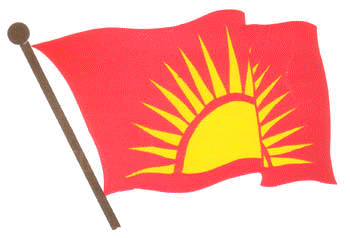Many, too, ask the other question: if he was killed, how? This question rises from contradictions in the official versions of Colombo's crowing achievement in its own "war on terror."
Some also ask the next question: what if Prabhakaran is dead? Is his end also that of the militant movement among the island's ethnic minority?
Starting with the first question, doubts about the death of the most dreaded of Tigers, who was "Thambi" (Younger Brother) to his Tamil supporters, should cause no surprise. For over four months now, after all, we have been flooded with often officially inspired stories about either his death or disappearance. We have been treated to a series of reports about his escape from the embattled country, in a submarine or by an aircraft, to destinations as different as Malaysia or the dense jungles in the south of India. We have read both about his death in battle and his suicide by biting the cyanide pill he wore round his neck, like other Tigers.
The latest announcement has also followed other tales, including one about a mass suicide by Prabhakaran and other top LTTE leaders. On Monday came what many saw as the end to all speculation on the subject. The state television of Sri Lanka, citing military sources, reported the "killing" of Prabhakaran along with his companions, as they were attempting a daring escape into the sea on a seized army ambulance. The army, said the state television, foiled the attempt with an offensive that left 30 Tigers dead. Three bodies, including Prabhakaran's, were reportedly found inside the burnt ambulance.
The body suspected to be his, according to the sources, was reportedly "blackened and beyond facial/physical recognition."
The body, which the army showed on television on Tuesday, was not burnt at all. It was draped in the Tiger camouflage, without a crease disturbed, with flies buzzing over undamaged limbs, a bullet-hit face and a broken head, covered partially with a cloth.
Army chief Gen. Sarath Fonseka announced that the body had been recovered. "A few hours ago, the body of terrorist leader Prabhakaran, who ruined this country, was found in the battleground," he told state television. "I take responsibility for this statement."
The general's announcement came hours after President Mahinda Rajapaksa delivered a victory address to parliament. The address was notable, above all, for the way it avoided mentioning Prabhakaran.
The televised evidence failed to convince many Tamils and media observers. The main reason for this was the much-reported fact that Prabhakaran moved around with two body double look-alikes for the sake of personal security. It was argued that the body, less obese than Prabhakaran in the latest photographs, could belong to one of the doubles. It may be recalled that among the army's finds in a jungle bunker of Prabhakaran was a photograph showing him in battle fatigues standing beside a slimmer and taller double in civilian clothing.
Heads are also shaken in disbelief at the idea that a fleeing Prabhakaran was in full uniform - or that he was carrying the LTTE's identity card, flashed in frequent close-ups on the television. Was he dead before his body was discovered?
Colombo later added the claim that a DNA test had proven Prabhakaran's identity beyond doubt. Critics ask how the test - which normally takes one to three days after the sample is available - was over so soon. In this particular case, the sample for comparison could only have been obtained from Prabhakaran's parents, living in the city of Trichy in India's southern state of Tamilnadu, almost a thousand kilometers away.
The question of questions, of course, is whether the war has ended with Prabhakaran. Eminent journalist Jonathan Steele gives an evident answer: "If Rajapakse treats Tamils as a conquered enemy, who have to be corralled in camps and whose land has to be split up and occupied, he will sow the seeds for new militancy in the generation to come." Steele's allusion is to fears about plans for a Sinhala colonization of Tamil territory in Sri Lanka's north, even while tens of thousands of the minority population in the "welfare centers" behind barbed wires are not allowed to return to their village homes.
Norwegian minister Erik Solheim, the architect of Sri Lanka's 2002 peace process that failed, is quoted as saying: "The government of Sri Lanka has won the conventional battle but it is far from winning the peace." Solheim is hinting at the possibility of Tamil hardliners reverting to guerrilla warfare, even while suggesting the need for a political settlement to achieve enduring peace.
The celebrations of Prabhakaran's death in the Sinhala-majority south, however, are not the kind to encourage easy optimism. "The majority of Sri Lankans feel a sense of relief and joy at the army's victory," says Lal Wickrematunge, managing editor of the Sunday Leader, founded by his brother Lasantha, assassinated in January for his disapproval of Rajapakse's drive for a military solution to the ethnic issue. Wickrematunge adds: "The thing is, nobody is taking into account the attitude of the oppressed minorities."
If such a public statement can be made in the current context, the editor's pessimism may be exaggerated. Sri Lanka is not without at least a silent minority of significant strength that would prefer a political solution to the problem based on popular Sinhala-Tamil unity.

